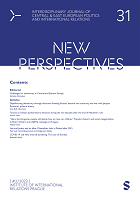Turnout in Serbian parliamentary elections during the two decades after the end of Milošević’s rule
Turnout in Serbian parliamentary elections during the two decades after the end of Milošević’s rule
Author(s): Uroš A. LazićSubject(s): Governance, Government/Political systems, Electoral systems, Political behavior, Politics and society, Sociology of Politics
Published by: SAGE Publications Ltd
Keywords: Turnout; Serbian parliamentary elections; canonical correlation analysis; non-consolidated democracy; Vučić’s hybrid regime;
Summary/Abstract: Methodological uniformity and the relatively small number of studies concerning election turnout in Serbia strikingly detract from the social importance of the topic. The goal was to reduce this disparity by studying turnout in the 21st century under a statistically atypical approach that uses objective, publicly available data at the municipalities/cities level. Beginning in 2012, the trend of a worrying, almost linear decrease in turnout was found. Canonical correlation analysis showed that socio-demographic-economic variables are highly predictive of voter turnout. Six pairs of statistically significant canonical factors were isolated from the space of socio-demographic-economic characteristics and corresponding variables of electoral participation. It was indirectly established that the analytically extracted types of environments whose inhabitants exhibit specific electoralparticipative behavior also show specific constellations of electoral preferences. The findings were then discussed in light of the regression to Vučić’s hybrid regime.
- Issue Year: 31/2023
- Issue No: 2
- Page Range: 77-103
- Page Count: 27
- Language: English
- Content File-PDF

